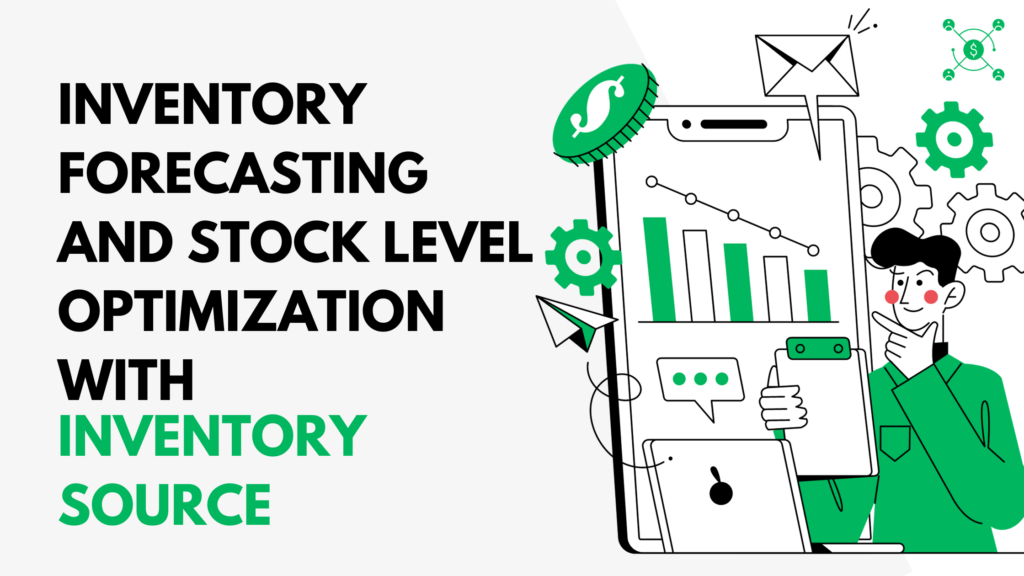Inventory Forecasting and Stock Level Optimization with Inventory Source
In the world of retail and ecommerce, inventory forecasting and stock level optimization are crucial aspects that can make or break a business. Accurate forecasting enables businesses to plan their procurement, storage, and sales strategies effectively while optimizing stock levels helps minimize costs and maximize customer satisfaction. To achieve these goals, businesses need to consider several key factors and data sources.
Understanding Demand Patterns
One of the primary factors that significantly influence inventory forecasting is the demand pattern of your products. By analyzing demand patterns, businesses can categorize sales into four types: constant, seasonal, trend, and erratic. Constant demand refers to sales that remain stable and predictable throughout the year. Seasonal demand, on the other hand, fluctuates based on factors such as holidays, events, or changing seasons. Trend demand indicates a consistent increase or decrease in sales over time. Lastly, erratic demand refers to unpredictable sales influenced by external factors like weather, competition, or promotions.
To accurately forecast future sales, businesses must employ different forecasting methods and data sources based on the type of demand pattern they encounter. By leveraging Inventory Source’s analytics tools, you can easily analyze historical sales data, market research, customer feedback, and industry trends to gain valuable insights into demand patterns. This information will enable you to make informed decisions when estimating future sales for different product categories.
The Impact of Lead Times
In addition to demand patterns, lead times also play a crucial role in inventory forecasting and optimization. Lead time refers to the time it takes from placing an order with your supplier to receiving the goods in your warehouse. Several factors can influence lead times, including the supplier’s location, reliability, and capacity, as well as transportation modes, customs, and regulations.
Businesses with longer lead times need to strategically order goods in advance and maintain higher safety stock levels to avoid stockouts. Conversely, those with shorter lead times have the luxury of ordering more frequently and reducing inventory levels. To ensure optimal inventory management, it is essential to regularly monitor and measure lead times. This data will help you adjust your ordering policies, minimize costs, and maintain a healthy stock level.
Managing Inventory Costs
Inventory costs are another critical factor to consider when optimizing your inventory levels. These costs encompass the expenses associated with purchasing, holding, and ordering goods. Purchasing cost refers to the price you pay your supplier for each unit of the product. Holding cost consists of expenses related to storing, handling, and maintaining inventory in your warehouse. Ordering cost includes the expenses incurred in placing, processing, and receiving orders from your supplier.
The total inventory costs vary based on product characteristics such as size, weight, shelf life, and demand variability. Higher inventory costs necessitate efficient optimization of inventory levels and turnover to reduce expenses and improve cash flow. By leveraging Inventory Source’s analytics tools, you can gain insights into inventory costs and identify areas where optimizations can be made. This data-driven approach will enable you to make informed decisions and achieve cost-effective inventory management.
The Importance of Data Quality
Data quality is a crucial factor that significantly impacts the accuracy of inventory forecasting and optimization. The accuracy, completeness, consistency, and timeliness of your data are essential for generating reliable forecasts and making informed decisions. Poor data quality can lead to inaccurate forecasts, wrong decisions, and poor overall performance.
 Inventory Source’s analytics tools help businesses achieve this by providing robust data management capabilities. By leveraging appropriate data sources such as historical sales data, market research, customer feedback, and industry trends, businesses can enhance the accuracy of their forecasts and optimize their inventory levels effectively.
Inventory Source’s analytics tools help businesses achieve this by providing robust data management capabilities. By leveraging appropriate data sources such as historical sales data, market research, customer feedback, and industry trends, businesses can enhance the accuracy of their forecasts and optimize their inventory levels effectively.
Choosing the Right Forecasting Methods
Selecting the appropriate forecasting method is a critical step in inventory forecasting and optimization. Forecasting methods are mathematical models that utilize historical data to generate predictions of future sales. Several forecasting methods are available, including moving averages, exponential smoothing, regression, and machine learning. Each method has its own advantages and disadvantages, depending on the type of data, demand pattern, and desired accuracy level.
Choosing the right forecasting method requires a thorough understanding of your products and scenarios. It is essential to evaluate and update your forecasts regularly, comparing them with actual sales data. By doing so, you can refine your forecasting models and improve their accuracy over time.
While data-driven forecasting models provide valuable insights, they may not always capture the complete picture of the retail industry. Combining data-driven approaches with market expertise ensures a holistic and accurate inventory forecasting process.
The algorithmic approach and interpretation of historical data play a crucial role in accurate forecasting. Businesses must consider these factors when selecting forecasting methods and adjusting their inventory management strategies.
Leveraging Optimization Techniques
Optimization techniques are mathematical models that utilize forecasts and inventory costs to determine the optimal order quantity and reorder point for each product. Several optimization techniques are available, including economic order quantity, reorder point, safety stock, and service level. Each technique has its own assumptions and limitations, depending on the product type, demand variability, and desired inventory policy.
Selecting the right optimization technique requires businesses to consider various factors, including product type, demand variability, and inventory policy. It is essential to continually monitor and control inventory performance, adjusting parameters accordingly. By doing so, businesses can achieve optimal inventory levels and streamline their supply chain operations.
The Power of Inventory Source’s Analytics Tools
With the vast array of factors and considerations involved in inventory forecasting and stock-level optimization, businesses need comprehensive solutions to tackle these challenges effectively. This is where Inventory Source’s analytics tools shine. By harnessing the power of these tools, businesses can leverage advanced data analytics, robust forecasting models, and optimization techniques to revolutionize their inventory management processes.
Inventory Source’s analytics tools offer a user-friendly interface that allows businesses to collect, store, and analyze data effortlessly. These tools provide access to accurate and up-to-date information, enabling businesses to make informed decisions based on reliable forecasts. The comprehensive suite of forecasting methods and optimization techniques empowers businesses to tailor their strategies to their unique needs and achieve optimal inventory levels.
The integration of advanced algorithms and machine learning capabilities ensures accurate and reliable forecasts, even in complex and dynamic retail environments. By combining these cutting-edge technologies with industry expertise, Inventory Source’s analytics tools provide businesses with a competitive edge in inventory forecasting and stock level optimization.
Conclusion
Inventory forecasting and stock level optimization are critical components of supply chain management. By accurately forecasting future sales and optimizing inventory levels, businesses can minimize costs, maximize customer satisfaction, and improve their bottom line. The key factors that influence inventory forecasting and optimization include demand patterns, lead times, inventory costs, data quality, forecasting methods, and optimization techniques.
With Inventory Source’s analytics tools, businesses can unlock the power of data-driven decision-making. These tools offer robust data management capabilities, advanced forecasting models, and optimization techniques that streamline inventory management processes. By leveraging these tools, businesses can achieve optimal inventory levels, enhance their supply chain operations, and gain a competitive advantage in the retail and ecommerce landscape.
Investing in Inventory Source’s analytics tools is a strategic decision that empowers businesses with the knowledge, insights, and support they need to thrive in the dynamic world of inventory management. With vast experience, comprehensive solutions, and robust support, Inventory Source is your trusted partner in inventory forecasting and stock-level optimization.



